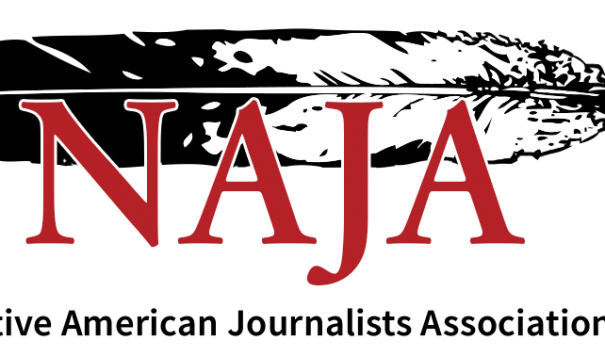
More than half of national media coverage of Indigenous peoples in the U.S., surveyed relied on clichéd themes and stereotyping terminology.
In the Native American Journalists Association’s Media Spotlight Report, NAJA took a snapshot of the dominant themes emerging in mainstream media coverage related to Indigenous peoples and communities.
The research team, led by former NAJA Vice President Dr. Victoria LaPoe, broke down five national news outlets’ online coverage in the United States, analyzing emerging themes and terminology from 87 articles published in 2018 and 2019.
Those publications included The Washington Post, The New York Times, The Guardian (U.S.), Fox News and NPR.
From the coverage we analyzed, we compared each news outlets’ noted Native sources and compared that number to Non-Native sources.
The full report contains our complete analysis, including an expanded explanation of this chart.
Using the NAJA BINGO Card as a guide, researchers identified how many times clichéd themes and stereotypes appeared in stories about Indigenous peoples and the issues they face.
The BINGO card has 14 key terms commonly found in news stories that display a limited knowledge of Indian Country. The most frequently used terms that appeared in the Media Spotlight Report centered on “poverty,” “reservation,” “drugs,” “addiction,” “alcohol” and “drums.”
More than half of the coverage analyzed contained at least one BINGO Card term and 26 percent of those stories contained more than one term.
Content ran the gamut, including the continued use of dictionary-defined racial slurs in headlines and relying on stereotypical themes of poverty and drug addiction. Many of the stories placed Indigenous people in the past and relied heavily on interviews with officials versus talking to people directly impacted within the communities.
Of the 87 stories surveyed, less than 7 percent were written by Indigenous reporters, calling into question the surveyed outlets’ inclusivity efforts.
NAJA’s mission encourages accurate and contextual coverage of Indigenous people. The American media landscape should reflect the diversity of the country. Ethical coverage is difficult at best when there is no one in the newsroom who can speak to the Indigenous experience.
NAJA continues to offer resources like the BINGO Card, first released in 2017 in partnership with High Country News, and newsroom training to any media organization looking to improve coverage of Indigenous people and communities.
The spreadsheet used to compile data for the NAJA Media Spotlight Report is available by request at: contact@naja.com.
View the full report
| Researchers conducted a qualitative thematic analysis to examine news coverage related to Indigenous people, specifically looking for themes. This study covers five online national news outlets in the United States. Download here. |
